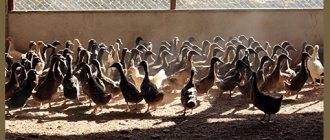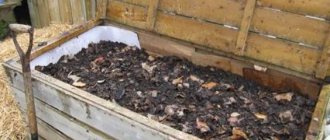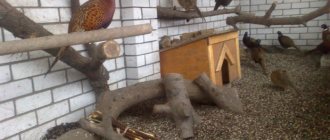- October 24, 2019
- Business ideas
- Ksenia Stepanishcheva
Among seafood lovers, octopus, squid, shrimp, mussels, crayfish and crabs are especially in demand. Gastropod mollusks are consumed less frequently. Breeding snails will be a profitable business, since the products can be supplied to restaurants that offer Greek, Spanish, Italian, and French cuisine. The nuances of conducting this activity are described in the article.
Beneficial features
The benefits of snails have not been fully studied, but some valuable qualities are still known:
- Saturation with vitamins. The product contains vitamins A, B, PP, E, K.
- Benefits for pregnant women, since snail meat can restore calcium metabolism.
- Used in cosmetology. Creams and serums based on snail secretions have a beneficial effect on the skin because they are ideally compatible with its structure.
- You can have these animals as pets.
- Snail mucus is used to treat inflammation, burns, and warts.
- The component improves complexion.
- The product is effective for weight loss because it contains no cholesterol and contains amino acids.
- Snail meat is an excellent aphrodisiac.
What does a snail look like and what is its use?
The body of a grape snail consists of a body and a shell. The first, in turn, includes the leg and head. The mantle surrounds the internal organs, and part of it is also visible from the outside. The shell has a spiral shape of 4.5-5 turns, located in different planes. The spiral twists to the right.
The shell is painted brown with an admixture of yellow or white shades. Since the appearance of a snail is a way of adaptation and camouflage, the brightness and richness of the color of the shell depends on the background of the environment.
The color may also change depending on the snail's diet. The sink has a ribbed surface, which allows it to accumulate a large amount of moisture. The ribs help reduce the weight of the sink and make it stronger. The diameter of the adult shell varies from 3 to 5.5 cm.
Grape snail
The average length of a snail's leg is 3.5-5 cm, but can reach 8-9 cm if the animal stretches out greatly. The body of the mollusk is highly elastic; its color can be gray, but in most cases it is beige with a brown tint. Some individuals have a monochromatic color, while others have a pattern - bright or almost invisible. The body is covered with wrinkles, which increases the surface area of the leg and retains more moisture.
Meat
Grape snail meat is rich in vitamins and other beneficial substances, including proteins, fats, carbohydrates, iron, magnesium, calcium. In some European countries (France, Italy) shellfish are eaten. In other European countries (Germany, Switzerland), the grape snail is classified as a rare species and is protected by law.
These gastropods are imported from Greece and other countries where heliceculture is developed (an area of agricultural production whose purpose is the professional breeding of grape snails). In many countries, including Russia, shellfish are bred for sale to restaurants and for sale in stores.
The recipe for making snail caviar was invented by culinary specialist Dominique Pierrot. The method involves salting grape snail eggs. The unusual dish tastes like mushrooms.
Medical purposes
helicillin , an extract prepared from grape snail, is very popular It has valuable broncho-relaxant properties. Shellfish are also used to isolate lectins , which are proteins and glycoproteins . Lectins are able to glue pathogenic bacteria together, depriving them of activity. Thus, the use of these substances is an effective means for the prevention of gastritis and ulcers, which are caused by the bacterium Helicobacter pylori.
Since snail meat is rich in calcium and essential fatty acids, the product is useful for high cholesterol levels in the blood, as well as for diseases such as rickets. Due to the presence of large amounts of mineral salts and iron in snail meat, the product is recommended for use during pregnancy and lactation.
Clam mucus also has a number of beneficial properties. It contains:
- collagen;
- elastin;
- allantoin;
- glycolic acid.
Grape snail in the grass
Cosmetic cream prepared from this mucus helps smooth out wrinkles and makes the skin smooth and silky. Such cosmetics help get rid of acne and other skin blemishes.
The beneficial properties of snail mucus have made it possible to use it in the treatment of diseases of the respiratory system, in particular:
- bronchitis;
- silicosis;
- whooping cough
Mucus is effective in the treatment of warts, burns, and age-related pigmentation.
Kinds
What types of snails should you choose? It depends on where the person will keep them. Each species requires its own living conditions:
- Achatina. Snails of this species are grown in glass aquariums. They must have several holes in them to allow fresh air to pass through. A lid is also required. The Achatina snail is one of the most common snails grown for business.
- Grape. Their breeding is allowed in gardens or terrariums. They require space at the rate of 30 square meters. see for 1 individual.
- Ampoules. It is important that in addition to water in the aquarium there is an air space of several centimeters. For 1 medium-sized snail you need about 10 liters of water.
Public catering facilities
Of course, restaurants are more interested in purchasing domestic raw materials for preparing seafood dishes. Today, in the coastal waters of the Sea of Okhotsk, the Sea of Japan and the Black Sea, there are farms where mussels are grown on an industrial scale. But you have to buy snails. Therefore, elite cafes and restaurants are interested in the development of domestic helicopter culture.
Shellfish meat is a delicacy that is distinguished by a whole range of beneficial properties and qualities. So, it contains magnesium, iron, calcium, phosphorus, zinc, copper and a large amount of vitamins (PP, K, A, E). Shellfish are indicated for pregnant and lactating women, as they are a natural source of calcium, and for babies. Snails are lean meat that contains a large amount of protein. By the way, for the same reason, snails are popular among bodybuilders and athletes.
Snails are cooked very tasty in France and Italy. But domestic culinary gurus have also learned to use dietary meat wisely.
Start
Before you start breeding snails, you should check whether these mollusks cause disgust. You will need:
- choosing the type of snail;
- arrangement of living conditions;
- purchase of broodstock - about 50 snails;
- determine sales locations;
- learn how to care for shellfish;
- register a business to organize a sales market.
Life cycle features
So, you have decided to start a business like snail farming. The necessary documents have been collected, the site has been prepared, feed has been purchased - all that remains is to settle the “herd” and watch it grow. Do not hurry! Without knowing how a snail lives, you can make many mistakes that will lead to the collapse of your shellfish farming business.
First you need to purchase live goods. You need to take 500 - 750 individuals. Preferably adults. The optimal time is mid-March, when the snails wake up. Literally from the end of March to the beginning of April, mollusks have a breeding season. At the beginning of summer, it is necessary to move the uterine individuals into a separate enclosure, and the eggs into an incubator. The young animals can be moved to an adult enclosure after 6 weeks.
One queen bee is capable of laying 40-60 eggs. The snail grows for approximately 1.5 years. There are some species that mature in literally six months.
Room
What do you need to breed snails? Suitable premises are required. The conditions of detention are as follows:
- Open areas. Not all snails can survive on them, only grape snails. Achatinas die due to low temperatures, and grapevines go into hibernation. You need to make a terrarium in this area or in the garden. A fine mesh can be used for this. Inside there should be plants 15-20 cm high (clover, legumes, Jerusalem artichoke, fodder beet, rapeseed), food for snails and lime. It is also necessary to maintain constant humidity. Need a sun canopy.
- Although these mollusks are unpretentious, good conditions are required for their cultivation. Good ventilation is required, humidity not less than 90%. Grape snails need a temperature of 22-24 degrees, and Achatina - 25-30. Stable temperature and humidity are necessary, since sudden changes in these indicators harm the mollusks.
- Mixed breeding. In this case, mating, laying eggs and growing young are carried out indoors, and the rest of existence takes place in an open area.
Starting a business
Before you start starting a snail business, you need to be patient and make sure that these mollusks do not disgust you.
So where to start:
- Select the type of snail to breed.
- Arrange living conditions for her.
- Purchase broodstock. About fifty snails.
- Make sure there is somewhere to supply the snails. This could be a restaurant, pharmacy or cosmetology business.
- Learn to care for them.
- In order to have a sales market, it is advisable to register your business.
Registration
Any business requires registration.
In order to pass it you need:
- Go through the registration procedure for an individual entrepreneur or legal entity. To do this you need:
- passport or other identification document;
- a copy of the identification code;
- receipt of payment of state duty;
- application for the creation of an individual entrepreneur;
- certificate of application of the simplified taxation system;
- Obtain permission to breed and sell snails from the veterinary service. The service must ensure that all necessary conditions are in place for the breeding and subsequent sale of shellfish.
Room
Depending on the place where snails are grown and reproduced, the premises are divided into:
- Open areas. Not all types of snails can survive in open areas, only grape snails. Achatina die at low temperatures, and grape snails simply hibernate. You need to make a terrarium at your summer cottage or in the garden. You can use a fine mesh for this. Inside should be:
- plants with a height of 15-20 cm, on which snails are planted for subsequent fertilization; clover, legumes, Jerusalem artichoke, fodder beet, and rapeseed are suitable for this purpose.
- food for snails and the presence of lime.
- constant humidity.
- canopy from the sun, because shellfish will not survive direct sunlight.
- Despite the fact that snails are not whimsical, you need to create the best possible conditions for them to live indoors:
- good ventilation;
- humidity not less than 90%;
- for grape snails, the optimal air temperature is 22-24 degrees.
- for Achatina 25-30 degrees.
- stability of temperature and humidity must always be maintained; sudden changes can harm any type of snail;
- Mixed breeding. In this type, mating, laying eggs and growing young are carried out indoors, and further existence occurs in an open area.
Equipment
- Aquarium with lid. You need to make several holes in it to allow fresh air to enter. The size should be such that each individual has about 30 cm of free space.
- Wood chips and soil. They must be free of debris. The bottom of the aquarium is lined with this mixture.
- Containers for food and water. They must be without sharp edges so that the snail is not injured.
- Stones or plastic. The shelter is made from these materials. You can also purchase ready-made shelters at a pet store.
- Thick tree branch. The best option for decorating an aquarium.
- Water. For bathing a snail.
- Spray. To maintain humidity.
Snails
Adult Achatina snail
This mollusk consists of a soft body and a shell, which is its “home” and reliable protection. It has two pairs of tentacles. The eyes are located on the upper tentacles, and the organs of smell and taste are located on the lower ones. The sink is approximately 45 mm high and 47 mm wide.
They have an almost round shape. The snail moves with the help of its foot, sliding it along the surface due to muscle contractions that pass in waves along the foot. At the same time, a lot of mucus is released, which helps to move on uneven surfaces. The grape snail widely lives in Central and Southern Europe, Western Asia and North Africa.
They are heat-loving and can be found in deciduous forests, bushes, and near populated areas. Their lifespan ranges from 6 to 8 years, but they can live up to 12.
All snails are nocturnal inhabitants.
Feed
You should not give meat to snails; for them it is heavy food.
It would be advisable to give food to snails in the evening or at night, while they are awake.
Her diet may include the following foods:
- Vegetables:
- cucumbers and tomatoes;
- Bell pepper;
- pumpkin and zucchini;
- cauliflower and Chinese cabbage;
- lettuce leaves;
- dill and parsley;
- Legumes:
- beans;
- peas;
- beans;
- Fruits:
- watermelon and melon;
- cherries and sweet cherries;
- pears and apples;
- pears and apples;
- peaches and nectarines;
- pineapples;
- plums;
- kiwi;
Additionally, this can cause predatory behavior in the snail, which can affect smaller snails.
To strengthen the shell, it is necessary to saturate the snail’s body with calcium. To do this, you can give them natural chalk (not from stationery stores) as food. Egg shells contain a lot of calcium. It needs to be washed well, dried and ground into powder, which needs to be added to the soil.
Fried, spicy, sweet and salty foods should not be given to snails under any circumstances. Salt is certain death for them.
Equipment
To breed snails you need:
- Aquarium with lid. There are holes in it for fresh air. The size should be such that there is about 30 cm of perforated space per individual.
- Wood chips and earth. There should be no debris in them. Line the bottom of the aquarium with this mixture.
- Containers for food and water. It is important that there are no sharp edges to prevent injury to the snails.
- Stones or plastic. The shelter is made from these materials. The additional shelters obtained are purchased at a pet store.
- Thick tree branch. This is a suitable decoration for an aquarium.
- Water - for bathing shellfish.
- A spray bottle that maintains humidity.
Life cycle
The grape snail is a mollusk whose body consists of a large leg and head. The body is flexible, beige-gray or whitish-brown. There are many folds on the snail's body, thanks to which the “leg” can stretch over long distances. Thus, under natural conditions, the body of a mollusk can stretch up to 9 cm. But artificially grown grape snails can reach truly gigantic sizes.
They show their activity in the warm season (from April until the first frost). With the onset of cold weather, snails begin to experience suspended animation - they hibernate, burrowing into the ground to a depth of 30 cm. The mollusks feed on plants and their fruits. On dry and hot days they sit out in the shade (under stones and leaves). The greatest activity occurs in rainy weather.
An interesting feature: snails are superior to lizards in their ability to regenerate. They are able to restore not only damaged tentacles, but even part of the head in a month.
Mollusks live for about 8 years. But if they are not in danger and are completely surrounded by care and attention, they can live for 20 years.
Features of snails
Before you open a snail farm, you should familiarize yourself with the characteristics of these mollusks. They consist of a soft body and a shell, which is considered a “home” and protection. The snail has 2 pairs of tentacles. The upper ones contain the eyes, and the lower ones contain the organs of smell and taste. The sink has a height of 45 mm and a width of 47 mm.
Achatina snails are considered giant. Their shell can be 19 cm long and weigh up to 400 g. Africa is considered their homeland, and in Europe they survive only at home and subject to all the rules. All snails are recognized as nocturnal inhabitants.
Mollusks have a round shape. Movement occurs with the help of the leg: it glides along the surface thanks to muscle contractions that pass in waves along the foot. This produces a lot of mucus, which allows for movement on uneven surfaces. Grape snails live in Central and Southern Europe, Western Asia and North Africa.
These mollusks are considered heat-loving; they live in deciduous forests, bushes, and near populated areas. Their lifespan is 6-8 years, but sometimes 12 are allowed.
Finding and purchasing quality caviar
To start growing grape snails as a business, you need to buy caviar. Of course, you can assemble it yourself, but this process is very labor-intensive and complex. You can buy eggs in specialized stores, such as fish stores. The cost is quite high, but it fully pays off in the future. The average price for 50 grams of caviar is about 90–100 euros. When purchasing, you should give preference to stores that have a solid reputation.
Interesting! Grape snail caviar has a rich supply of macro- and microelements. For example, zinc, magnesium, potassium and iron. It also contains vitamins A, D, C, E.
Feed
Breeding snails at home may seem difficult for beginners. But this business will not be difficult if you familiarize yourself with all its intricacies. It is also important to know about feeding rules. Shellfish are given food in the evening or at night, when they are awake.
Snail food consists of:
- Vegetables - cucumbers, tomatoes, sweet peppers, pumpkin, zucchini, cauliflower and Chinese cabbage, lettuce, dill and parsley.
- Legumes - beans, peas.
- Fruits - watermelon, melon, cherries, pears, apples, peaches, nectarines, pineapples, plums, kiwi.
To strengthen the shell, it is necessary to saturate the shellfish body with calcium. Therefore, natural chalk is added to food. A lot of calcium is found in eggshells. It must be washed, dried, and ground into powder, which is added to the soil.
Water is considered the most important component for shellfish. It is needed for drinking and bathing. Shellfish should not be given fried, spicy, sweet, or salty foods.
We create conditions
To ensure active growth, mollusks need to organize optimal conditions. To do this, select an open area with grass, create a greenhouse, or build an appropriate room.
If the climate in the region allows them to be kept in natural conditions and fed naturally, then rent a suitable plot of land. Its size should be related to the number of individuals being grown. So, for 30-40 mollusks there should be at least 1 square meter. m of free space. At the same time, ordinary grass 10 cm high is sufficient for nutrition.
If artificial feeding is assumed, then up to 200 adult individuals can fit in the same area. They can eat special food, powdered milk, fresh herbs and chalk as a mineral supplement.
Whichever growing option you choose (greenhouses, indoors, open air), you need to provide the snails with warmth. In winter, they can hibernate at low temperatures or even die, so it is important to install good heating. Also carefully protect them from other animals and rodents.
Follow these rules:
- Provide good ventilation.
- Control air humidity, which should not fall below 85%.
- Optimal temperature indicators are 20-23 degrees.
- Enclosures and ditches should be regularly cleaned of emerging mucus and dirt.
For the convenience of keeping snails in artificial conditions, it is advisable to purchase:
- enclosures for young animals;
- ditches for laying eggs;
- racks for adults;
- boxes for sale;
- incubator.
If you intend to breed them at home in small quantities, then a simple terrarium will do, in which you constantly need to maintain an optimal temperature and promptly moisten the surface. Also keep the aquarium clean so that the mucus left behind does not spread harmful bacteria.
Sales
When industrially breeding snails, it is necessary to think about the issue of marketing the products. These goods can be sold in the following ways:
- Supply to cafes and restaurants. Snails are considered a healthy delicacy. Gourmets love them for their excellent taste. Breeding snails for restaurants is a profitable business. Products can be supplied locally or abroad. The French are considered connoisseurs of snail meat. You can establish connections with restaurants and cafes using feedback via the Internet or telephone. They usually purchase frozen goods. Snail caviar is valuable, which is much more expensive compared to red and black caviar.
- Wholesale sales. This method allows you to sell in large quantities.
- Sales to manufacturers of medicines and aphrodisiacs. Snail mucus has a healing effect. They are used to create potency enhancing products. Another component is added to preparations for the treatment of the respiratory system.
- Sale for breeding. People who want to breed snails can sell broodstock.
Sales channels
The demand for products made from grape snails or Achatina is quite high both abroad and in Russia. The main purpose is meat. It can be implemented in the following directions:
- shops and supermarkets;
- cafes, restaurants;
- wholesale or retail buyers;
- pharmaceutical industry.
The latter area uses shellfish as an ingredient for preparations. For example, in the treatment of cough, as a rejuvenating agent or improving the properties of the immune system. Therefore, implementing them will not be difficult.
Breeding rules
How to breed grape snails? First you need to create positive conditions for reproduction:
- temperature – 15-24 degrees;
- humidity – 80-85%;
- lack of wind.
The technology for breeding grape snails is as follows:
- Breeding stock is being recruited. You should choose the largest snails. It will take about 50 pieces.
- The formation of pens for laying eggs is in progress. This should be done indoors as snail eggs prefer to be eaten by a variety of insects. The depth of the masonry is about 4 cm, which should be taken into account when forming the bottom.
- They make pens for keeping snails.
- Shellfish feeding and pen hydration are required.
- Products are collected and sold.
Grape snails and Achatina are considered hermaphrodites (have 2 genital organs), therefore, for mating, 2 mature snails (2-3 years old) are required to be planted together. Reproduction occurs after hibernation, in the spring. Mating takes about 2 hours.
To lay eggs, depressions in the soil are used, and then they are buried. Grape snails lay 40-60 eggs, Achatina - 100-300. If propagation is carried out in open areas, then laying can be carried out in the holes of plants. The entire egg laying procedure is very lengthy and can last up to 20 hours.
About 30% of mollusks die after laying eggs. A month later, small snails emerge from the eggs and are separated from the adults. If proper feeding and optimal conditions are provided, then a year later there will be offspring.
What you need to breed snails
First you need to decide on the room or habitat for the snails. A greenhouse will be an ideal habitat for mollusks: a lot of free space, high humidity and a temperature that is pleasant for them. However, this option is only suitable for rural areas with plenty of territory. In an urban environment, organizing everything is a little more difficult, but also possible. It is enough to have an apartment with a spare room or a garage of about 20 square meters. meters, where it is easy to breed snails in special terrariums.
Containers for keeping snails are called molluscaria. They contain soil fertilized with useful substances containing calcium and other minerals that promote the normal functioning of mollusks. Optimum temperature +23 °C. A prerequisite is high humidity in the containers, otherwise drought will not only slow down the reproduction process, but also kill the animals. Waste products are removed once every 3 days.
Costs and profits
Expenses and income are different in each case. It depends on the:
- Purchasing or rearing broodstock.
- Forming pens with your own hands or buying ready-made ones.
- The use of special equipment to maintain temperature, humidity, and light.
The broodstock can be raised independently (this applies to grape snails) depending on the place of residence. They are found in Australia, in southern Russia and in countries with a temperate climate. You can purchase a ready-made herd, its price is approximately 13,200 rubles. for 50 pieces. To create a full-fledged snail farm, you will need 750 snails, the price of which is about 200,000 rubles.
It will cost about 2 rubles to maintain 1 snail per month. It turns out that for 750 shellfish you need 1,500 rubles. To purchase equipment (pens, ditches, boxes) you will need about 33,000 rubles.
As a result, to start a business, you will need 233,000 rubles for snails and 1,500 rubles per month for their maintenance. Revenue from the sale of 1 ton will be approximately 660,000 rubles. The costs are recouped by 150% in 8 months. If you independently form a broodstock, the savings will be 200,000 rubles. If all the rules are followed, the business will be profitable.
Types of snails for breeding
At the moment, several main types are popular: grape clams and giant Achatina. You can purchase them at specialized points or collect them yourself in the forest, parks or summer cottages (if any). You should pay attention to large representatives with a intact, attractive shell. After all, snail breeding as a business is no less serious matter, requiring an appropriate approach. When choosing grape snails, you need to remember:
- The average cost of a shellfish is from 30 rubles .
- A pair of snails will cost 50 rubles .
- A kilogram (about 50 pieces) - about 1000 rubles .
- The snail shell must have a diameter of at least 5 cm .
As for a species such as Achatina, their average cost per 1 piece ranges from 50–100 rubles per mollusk. Unlike its grape counterpart, Achatina is extremely sensitive to temperature changes, so you need to carefully monitor humidity and heat. Otherwise, there is a risk of losing the offspring. It is also necessary to take care of the appropriate soil: it must be moistened and fertilized.
Profitability
This product is exotic. Therefore, the question arises: is snail farming a profitable business or not? This type of activity requires a small investment at the beginning of the business. In addition, competition will be low. There is a rich spectrum for implementation. Profitability is up to 100%.
Sales of products can be carried out in the culinary or medical field. In the first case, it will be an exotic dish, and in the second, it will be a product for creating pharmaceuticals. Considering that 1 individual produces about 1 kg of offspring per season, and the price of caviar is 10-12 thousand rubles per 100 g, the business is quite promising.
Business plan for opening a snail farm
To succeed in shellfish farming, you need to have a clear plan. You should draw up a business plan for a snail farm, which will contain information about start-up capital, direction of implementation, possible risks and a list of necessary documentation. You can make money on shellfish in several ways:
- selling them as a food product;
- sale of decorative mollusks (Achatina);
- sale of snail caviar.
WATCH THE VIDEO: SNAIL BREEDING AS A BUSINESS
An undoubted advantage is the fact that these animals are hermaphrodites. Therefore, their reproduction does not require a male and a female. Time frame: six months for growth and 3 for implementation. A snail farm business plan will consist of the following points:
- A clear analysis of the market component.
- Price for 1 kg of products.
- Search for target buyers.
- Preparation of documents and opening of an individual entrepreneur.
- Funds for the purchase of the first batch.
- Area and equipment for breeding.
Interesting! Snail meat is a natural aphrodisiac and has a positive effect on libido and male potency.
Advantages and disadvantages
The advantages of business include:
- Possibility of starting a business from scratch.
- Minimum monthly investment.
- Ease of breeding.
- No special nutrition required.
- Possibility of breeding in the country.
- Benefits of snails.
- Combining business with your main job is allowed.
To determine possible expenses and profits, you need to draw up a detailed business plan. It indicates all the nuances of doing business. Thanks to a ready-made business plan, it will be easier to build this activity, identify errors and eliminate them. But this business also has disadvantages:
- Difficulties in finding a sales market.
- Death of 30% of snails after laying eggs.
- Possible lack of breeding space.
- Shellfish are slippery, so you should love them and get used to them if you breed them.
Thus, the snail business is not very widespread in Russia, so when you open this business, you can build a successful activity. You should weigh the pros and cons so that there are no regrets later, because this type of business is specific. A careful approach to this work will allow you to create a profitable business.
Reviews
Larisa: “I tried to grow grape snails first for my own needs. Then I met the owner of an elite restaurant and he happily began purchasing goods from me. True, for this I had to officially register. In terms of additional income, this is a fairly profitable and simple business.”
Nikolay: “They are ready to buy such products only in large cities of our country. But there are already enough competitors here, with which restaurant owners have established permanent connections. Only the European market remains attractive, but not every newcomer will be able to find a buyer there.”
Taras: “You shouldn’t think that this business is unprofitable for Russia, because snails have not yet become fashionable. Just 20 years ago, shrimp were not popular, but today they are sold and consumed at every turn. The main thing is how you carry out the advertising campaign.”
What you can do right now:
- Watch the video on the topic (provided above)
- Download a detailed business plan for opening a snail farm right now
Boost your passive income Take a free online course from our team in 4 days
Step-by-step instruction
In order for a business project to bring high profits and pay off, it is necessary to carefully consider every point of the business plan for breeding snails.
Once convinced that the implementation of this idea is rational, the entrepreneur should adhere to the following sequence of actions:
- Business registration.
- Search for shellfish suppliers.
- Selecting a place to organize a farm (indoors, outdoors or in a greenhouse).
- Redevelopment and/or renovation of premises or construction of a farm on a plot of land.
- Farm equipment.
- Obtaining permission from the veterinary service.
- Shellfish farming.
- Search for sales channels.
- Advertising.
The preparatory process will take about two months, and the first profit will be received approximately a year after the start of production.
Business registration
Main nuances of the business registration process:
- Official registration of business activity in the form of individual entrepreneur or LLC. Forming an LLC is suitable for a medium to large sized farm. The IP form is ideal for breeding snails at home.
- Classifier code 01.49.9 “Breeding of other animals not included in other groups.” This type of economic activity includes the item “breeding earthworms, earthworms, snails, etc. on farms.”
- A suitable tax system is a simplified one, according to the 6% scheme.
- After organizing a farm, the entrepreneur must obtain permission from the veterinary service to conduct this type of activity. A businessman will need quality certificates for each batch of goods.
- Obtaining permits from regulatory services (Rospotrebnadzor, Sanitary and Epidemiological Station, Fire Prevention).
Room and location
When breeding snails indoors, the following requirements apply:
- area from 20 square meters,
- communications: electricity, heating,
- no direct sunlight.
The room can be a spacious room in the apartment.
When organizing a snail farm on a plot of land, the following requirements are imposed on it:
- preferably a warm climate, this will shorten the hibernation time of mollusks,
- the area depends on the number of individuals that are planned to be raised on the farm,
- it is desirable that there are no potential threats from moles, lizards, hedgehogs, shrews, etc.,
- availability of utility room.
The video shows the structure of a snail farm in the Moscow region. Filmed by the channel: “Main farming portal FARMER. RU".
Necessary equipment
Let's consider the list of equipment for a farm for breeding grape snails indoors for 30,000 animals.
| Name | Approximate prices in rubles |
| Enclosures for young animals (10 pieces) | 10 000 |
| Enclosures for adult snails (80 pieces) | 80 000 |
| Containers for young animals (10 pieces) | 5 000 |
| Containers for laying eggs (10 pieces) | 5 000 |
| Shelving | 20 000 |
| Snail boxes for sale (100 pieces) | 2 000 |
| Humidifiers | 10 000 |
| Thermal mats (100 pieces) | 70 000 |
| Other equipment and inventory | 18 000 |
| Total | 220 000 |
Containers for snails - from 200 to 1000 rubles
Containers and enclosures for snails - from 200 to 1000 rubles
Racks - 20,000 rubles
Thermal mat - 700 rubles
Staff
To maintain a snail farm for 30,000 individuals, one worker will be required.
It will perform the following functions:
- animal feeding,
- cleaning terrariums,
- monitoring the growth rate of mollusks,
- selection of goods for sale,
- control of temperature, humidity and other parameters.
The entrepreneur himself can take upon himself:
- functions for generating company reports,
- paying taxes,
- establishing sales channels and others.
Otherwise, you will need to hire a sales manager for a permanent job, and it will be more profitable to outsource accounting.
Promotion and advertising
To effectively sell snail meat and caviar you will need:
- Develop a corporate website. This should contain information about the farm, its product, the living conditions of the snails, as well as contact information for partners and buyers. On the website you can provide delivery of goods to order.
- Post information about the company and its products on thematic forums and electronic bulletin boards.
- Create groups on social networks.
- Call or personally visit restaurants and other catering establishments with an offer to regularly sell your products. You can also offer snails for sale in supermarkets, hypermarkets and other stores. Large customers should sell goods at a favorable price, ensuring optimal delivery conditions.
Nature's hints for gourmets: wintering and habitat of grape snails
Some do not breed, but collect shellfish for their culinary masterpieces. Therefore, they do not need to invest money in this business. It is enough just to know the habitat of grape snails. They are native to Southeastern and Central Europe. In the wild, mollusks live at an altitude of 2 thousand meters above sea level.
However, you can also meet them in ordinary places:
- in a park area;
- on flattering edges;
- among overgrown bushes;
- in valleys and meadows;
- in the vineyards;
- on alkaline, limestone soils.
Sometimes they hide in shady thickets or under large boulders/stones. In some cases, individuals burrow into damp moss, which gives off a cool feeling. To find them in the spring, you need to find out where grape snails winter in nature. According to the study, with the help of their fleshy body they burrow into the ground and at a depth of 30 cm fall into a state of suspended animation. These shelters are their permanent wintering place. To prevent freezing, they close the hole in the sink with a limestone stopper.
As you can see, breeding grape snails is a fascinating, profitable and fairly simple activity. To do this, you just need to prepare a spacious room with a humidity of 85% and plan the right diet. In addition, it is necessary to regularly clean the area from mucus to protect “pets” from bacteria. By observing these requirements for their cultivation, in 6-18 months you can get a rich litter of snails.
Primary activity
Growing snails as a business is very profitable. Domestic snails are used in many industries. Having a farm of this kind, it is quite possible to compete with foreign suppliers.
The threshold for entering the business is minimal, but the only negative is the long stage of breeding. The average time is six months, and the age for sale is three years from birth. Since these are creatures that combine two sexes, you do not have to purchase males and females, this is also important. Regarding the species, the most common are Achatina snails. They are several times larger than grape varieties, but require temperature conditions, since they are an African species, and they may not survive the winter.
How to earn money:
- sale as a food product;
- sale as an ornamental animal;
- sale of salted caviar.
What kind of snails can you grow:
- Achatina giant (large in size, requires a warm climate);
- grape snails (unpretentious, easily survive in any climate).
Since the cost of purchase of these two species is the same, it is possible to grow both.
Market analysis and target audience
Organizing large-scale production of snail meat will allow us to enter the European market. In this way, large quantities of the finished product can be sold. It is important that the product meets European quality standards.
Growing snails at home should be focused on the domestic market. First of all, these are elite restaurants, manufacturers of semi-finished products, and large grocery stores. In addition to shellfish meat, another delicacy can be supplied to the market - snail caviar. The demand for this product is growing rapidly due to its unique taste and special mushroom flavor.
The demand for snails is not limited to the food industry. An entrepreneur will be able to earn a lot by selling them as raw materials for the production of medical and cosmetic preparations. The mollusks of the Akhatina breed will be especially valuable here.
Extracts from mollusks are included in the following medications:
- bronchorelaxants,
- drugs that restore metabolism,
- rejuvenating complexes,
- means for restoring potency.
Shellfish meat is recommended in its pure form:
- people with problems of the osteochondral system,
- people with gastrointestinal diseases,
- for pregnant women, as a source of calcium,
- for older people as a source of calcium.
Selling the product at a price lower than foreign suppliers will allow expanding the target audience of the market. Since the domestic manufacturer does not pay customs duties and delivery from abroad, it is able to offer a better price to its consumers. This will attract new customers, who will become not only restaurants and shops, but also ordinary people with average incomes.
Sales of products
If business owners plan to sell snail caviar and meat, they should establish business relationships with various catering establishments: cafes, restaurants and grocery supermarkets. Products can also be supplied to commercial companies that produce gourmet canned shellfish. Snails often act as raw materials for the production of cosmetics and medical products, so entrepreneurs need to pay attention to these areas.
It should be borne in mind that snails are quite exotic products. There are not very many consumers of such delicacies in Russia; in order not to be left without buyers, you need to be very careful in finding distribution channels.
Solving financial issues
Financial issues arise when you just decide to create a grape snail farm. As part of the purchase you will need:
- Broodstock (700 snails) - multiply by an average of $3;
- Equipment, depending on what and where, if for a greenhouse, then in total it will cost you about $500;
- Feed - $1200;
- If you do not have your own plot, you will have to pay for the land, the amount varies depending on the owner's area.
Let's do a rough calculation. Let’s take for example one hundred square meters of land, from it you will receive 100-110 kg of finished goods. Experts say that one snail can produce an average of 1 kg of offspring. Today the price for 1 kg is 3-3.5 euros. A snail stock pays for itself in 1.5 years. During all this time, a herd of 100 kg will produce an offspring of 4 tons. This is provided that the reproduction of individuals occurs at a high level of comfort in terms of maintaining temperature and humidity.
Business profitability can reach 90%. The main criterion for achieving such a result is patience and organization. Three optimal methods of breeding: pens, greenhouses, terrariums.
Often, owners of the idea to create a snail business failed due to the wrong habitat of the invertebrate stock. Today there are three known ways to keep snails at home. Let's look at each of them, what advantages and disadvantages they have.
Corrals
From an economic point of view, pens are considered more acceptable than greenhouses. But the significant disadvantages of this method obviously make it less popular. When creating an outdoor pen, know that you will need to protect the snails from predators, and the air temperature will be the first barrier to the breeding result, since weather conditions will control the temperature. And as you know, unfavorable conditions are the first reason for snails not to lay eggs, but to keep them inside until optimally favorable conditions. This method is good in the summer; in winter they sleep, making a tunnel in the ground.
Their place of residence for 700 individuals should be 50 sq.m. Be sure to fence them off with a fence, although they are slow, they will more than cover kilometer distances, and they will do this at night. The fence should not be simple; at the top there should be a concave semicircular arc that prevents snails from climbing through the fence. A good site would be land covered with vineyards or weeds.
Terrarium
The first main criteria for choosing a room are ventilation and humidity. Humidity should be approximately at least 80%. The optimal temperature regime is 20-23°C above zero. This method allows you to switch to year-round breeding of snails, although this will require costs for arranging terrariums or an entire workshop. Another important condition is the bottom of the terrarium. Be sure to take care of its thin covering of moss and soil. Now they sell special coconut shavings on the market, which will also work. Mist the soil or shavings occasionally to create moist conditions.
Although you can’t envy a snail’s speed, it can crawl out of the terrarium easily, so don’t forget to cover it with a lid. Get rid of all kinds of metal decorations and stones, since mollusks often crawl along the walls of the container and rarely, but sometimes fall down. To avoid cracks in the sink, arrange its premises with natural, non-solid objects. Refrain from littering with newspapers; snails love printed matter, which may be the last thing it eats.
Greenhouses
The advantage of this breeding method is that it is more accessible and less expensive. Greenhouse conditions make it possible to control humidity and temperature. In general, to grow snails in greenhouses you will need:
- 700 snails 2 or 3 years old;
- About 4 sq. m of greenhouse area for broodstock and another 18 sq.m. for young animals and egg incubation;
- Special boxes measuring 1x0.5 m (8 pieces are enough) for keeping adult broodstock;
- Plastic cuvettes for keeping small-sized young mollusks;
- Metal racks for ditches;
- 400 sq. m. for breeding the main herd.
To feed such a number of individuals, you will first need 1500 kg of feed. In addition to this, feeding with fresh grass is definitely necessary.
Wherever you grow snails, monitor the humidity; an excessively humid environment is associated with fungal diseases, even among ardent lovers of water treatments.
The value of grape snails
Grape snails are predominantly common in Russia; they live in valleys, vineyards, forests and other areas where moisture is present. These specimens are very unpretentious and easily adapt to new conditions, thanks to which they can live and reproduce not only in their natural environment, but also in captivity.
Farmers often raise snails specifically for restaurants. Shellfish meat is considered a delicacy product that is highly valued in European countries, for example, in France and Italy. It not only has a unique taste, but also contains many healthy vitamins and microelements.
Snails are also widely used in the medical and cosmetics industries. They serve as raw materials for the production of medicines and are used for the manufacture of various anti-aging products.
How to advertise a business
There is no point in advertising your products to customers separately; it would be much more effective to establish sales channels directly, and then support advertising for other customers. For example:
- Public catering. Focus on restaurants serving European and in particular French cuisine, less often Chinese
- Production. You can go to factories and small production workshops that preserve delicacies
- Cosmetology and pharmaceutical companies. Mucin is in great demand in the field of cosmetology
- European market. It won't be easy to import, but the result will be worth it
Business Description
This business can be started by growing shellfish in an apartment or on a personal plot. In the future, you can expand your own business to organize a full-fledged farm. The peculiarity of the business idea for breeding snails is that the first profit will not be received soon. Since on average it will take about one and a half years for a snail to mature, and in rare cases up to three years. Therefore, entrepreneurs are initially recommended to purchase mature snails, in this way they can slightly reduce the waiting time for receiving the first profit.
Business relevance
Thanks to the popularity of these mollusks, creating a snail farm can be quite a profitable venture.
Circumstances that determine the relevance of a business idea for growing snails:
- Current economic sanctions create favorable conditions for the development of domestic production.
- The emptiness of this market segment. This circumstance is due to the fact that shellfish farming is a relatively new type of business activity for Russia. Globally, only 60 percent of the demand for this delicacy is met.
- Small starting capital and monthly costs.
- A source of regular and high income.
Types and characteristics of snail reproduction
Breeds suitable for growing snails for business purposes:
- Grape. This is a terrestrial gastropod. The diameter of the shell of a mature mollusk is between three and five centimeters. A kilogram of snail meat is 30-40 individuals. In Europe, this type of snail is considered the largest and has been used as food since ancient times. Such food was and still is classified as healthy and wholesome.
- Arhahatin. They are land gastropods. They live in countries with warm tropical climates. The length of the shell of a mature individual is usually five to ten centimeters, however, some specimens have a gigantic size of 20 centimeters or more. In Russia, they can only be bred in warm mollusc enclosures.
Grape snails
Achatina snail
Since grape snails and Achatina snails are unisexual (hermaphrodites), each individual can reproduce equally. Their mating usually occurs in spring or early autumn. You can expect about 60 eggs from grape snails per year. One clutch of Achatina can contain 300 eggs, and in a year there are five or six of them.
If the mollusk is not happy with something, for example, low temperature, then they may not want to lay eggs. Therefore, it is important to provide them with stable, comfortable living conditions. Incubators are created to raise young animals. As a rule, the broodstock live separately from the young animals.
Living conditions for snails on an artificial farm
Growing snails as a business can be organized in two ways:
- on the ground, by organizing an aviary or greenhouse,
- indoors, by installing molluscs.
Outdoor farm
Outdoor farm
Breeding snails in an apartment (molluscarium)
Farm in a greenhouse
Growing up on a farm
A farm on a plot of land involves the creation of special enclosures. To grow snails in a personal plot, you will need a shady place, which should be fenced with a fence on the foundation, approximately 20 centimeters deep. This is necessary to protect the shellfish from rodents and other pests that live in the ground and pose a threat to the snails.
The height of the wall is about half a meter to a meter, and its shape is concave so that the pets, when climbing up, fall into the enclosure. The fenced area is covered from above with a metal mesh with small cells. This measure will protect shellfish from birds, reptiles or other animals. Shallow trenches are formed in the pen to collect water, and hills are formed here for the snails to hide from moisture.
Plants that the snails will feed on are planted inside the enclosure, for example:
- burdock,
- nettle,
- wild grapes, etc.
Grape snails hibernate during the cold season (for about three months). During this time, some of the mollusks can be moved to a warm room; this will allow them to grow new offspring faster and recoup the initial investment.
Caring for shellfish in greenhouses allows you to control air temperature and humidity. In greenhouse conditions, snails grow much faster than in the open air. However, this method is not suitable for a small farm, since it requires significant physical costs and initial financial investments.
In order to grow about a ton of grape snails during the growing season, you will need the following plot:
- with the natural feeding of thirty to forty individuals, one square meter of vegetation will be required, the height of which should be at least 10 centimeters,
- artificial feeding makes it possible to place up to 200 mollusks on one square meter.
For 20 snails you will need one kilogram of feed or grass; they are also fed with chalk, dry milk, etc.
Caring for snails in an apartment
You will need a room with an area of 20 square meters. It is equipped with racks on which special tanks for snails are installed; they are called molluscaria or terrariums. The entrepreneur will need to imitate the conditions of the natural habitat of future pets. In such an environment, they grow faster because they do not hibernate and the breeding cycle occurs all year round.
Requirements for indoor living conditions for snails on a farm:
- Six individual grape snails are housed in one mollusc with a capacity of 50 liters.
- It is permissible to plant only one pair of Achatina in one tank (50 liters).
- The air temperature in the molluscaria for growing grape snails is 22-23 degrees Celsius, and Achatina - 25 degrees Celsius.
- For grape snails, the litter is formed from soil, leaves and coconut fiber, fertilized with calcium (to build a shell) and other elements.
- For Achatina, the litter is formed exclusively from coconut fiber/substrate, without soil.
- Balanced diet (special feed and natural food are used).
- Good room ventilation.
- Air humidity is from 80 to 90 percent.
- The litter should always be damp and clean (it is changed twice a week).
- Sudden changes in humidity and temperature are unacceptable.











